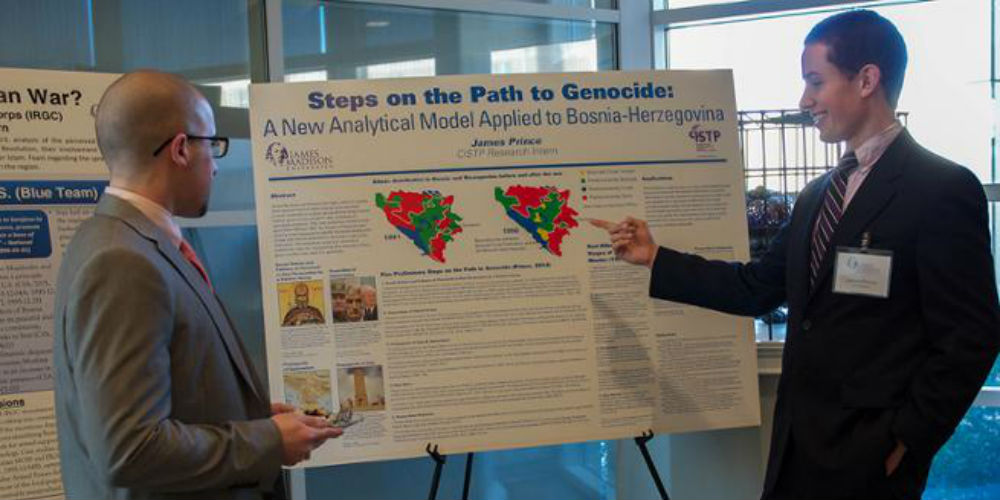
Qualifications
This certificate is a joint project by the Geographic Science and Intelligence Analysis Programs in the School of Integrated Sciences. To qualify for the certificate, students must, at a minimum, have a cumulative average of “B” for all of the core courses, and get a “C” or better in each one.
As required by USGIF, students should also submit a portfolio of their geospatial work to demonstrate their geospatial skills. This can also be a valuable component of an application for an internship or job. Portfolios should comprise four paragraphs and supporting evidence for each paragraph. Each paragraph should address an individual core competency (GIS and Analysis Tools, Remote Sensing and Imagery Analysis, Geospatial Data Management, and Data Visualization) and discuss the student's learning in the competency area, any strengths and weaknesses in their learning that they observed, and a brief explanation of the evidence that they are including (projects, labs, etc.). Additional details on the portfolio are available in a separate document.
Core Courses
- GEOG 215: Cartography and GIS
- GEOG 216: Earth Observation and GPS
- GEOG 365: Cartography and Geospatial Visualization
- GEOG 366: Intermediate Geographic Information Systems
- GEOG 385: Principles of Remote Sensing
- IA 200: Introduction to National Security Intelligence
- CISE 460: Selected Topics in Intelligence Analysis;
In accordance with their individual interests and ambitions, students pursuing the certificate, and seeking to expand their knowledge of issues and regions, are also encouraged to take additional courses in fields such as economics, history, international affairs, and political science, among others.
Course Objectives
The objectives of the overall certificate program to assure that students who complete the program can:
- Explain basic concepts of geospatial intelligence.
- Identify various potential sources of data, along with their strengths and weaknesses.
- Describe how technology can help in dealing with a variety of issues, such as data management.
- Identify and apply appropriate methods of research and analysis, including multidisciplinary perspectives.
- Assess the quality of their work based on rigorous standards of critical thinking.
- Work effectively in teams, including using planning and time management.
- Communicate the results of research and analysis effectively orally, in writing, and through visualizations.
- More detailed objectives for each of the core courses are available in the syllabi.
Careers
Geospatial intelligence is a career that allows you to make a direct difference in people’s lives and make the world a better and safer place. Some of the activities being undertaken by our recent graduates include using geospatial technologies such as GIS and satellite/aerial imagery to:
- Help communities predict and respond to natural disasters.
- Predict where violence may break out.
- Help respond to the migration crises.
- Protect US infrastructure from terrorist attacks.
- Create maps and other data used by soldiers and other people on the ground in conflict areas.
It is also a career that has a bright future and solid compensation. The US Department of Labor lists it as a career with a ‘bright outlook’ and as a ‘green career’, and a major study shows that the industry is growing at approximately 10% per year with growth expected to continue into the future.
According to a study conducted by the American Society for Photogrammetry and Remote Sensing, 68% of geospatial technology employees earn over $50,000 / year, and 41% earn over $75,000. The ASPRS also reports that people in the industry report difficulty hiring qualified people who can obtain security clearances.
Interested?
Interested in JMU’s USGIF-accredited certificate? Please fill out the USGIF Declaration Form and email it to Fasha Strange at strangfx@jmu.edu.
For more information about the program, contact Phil Baxter.

